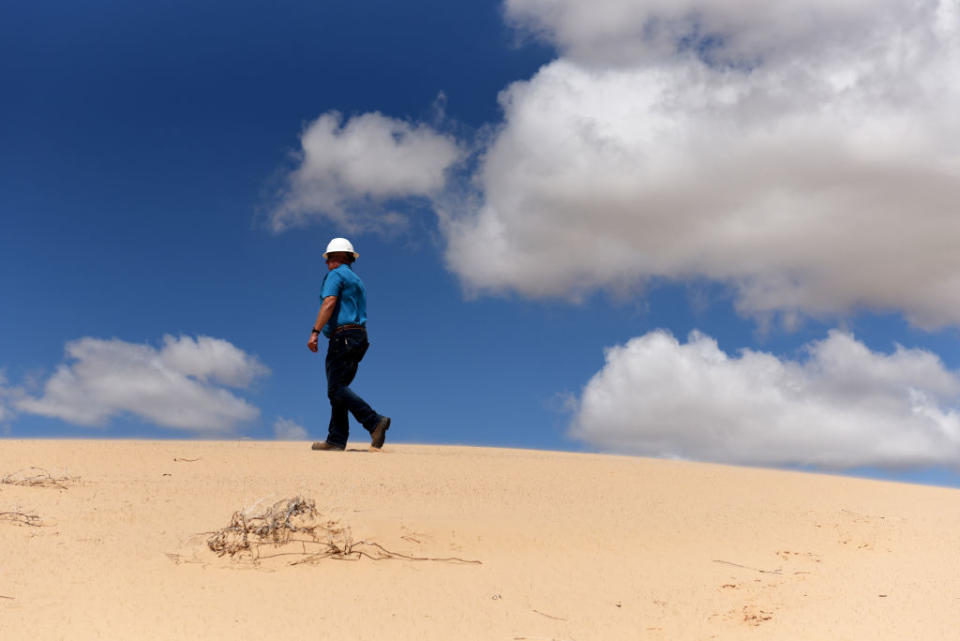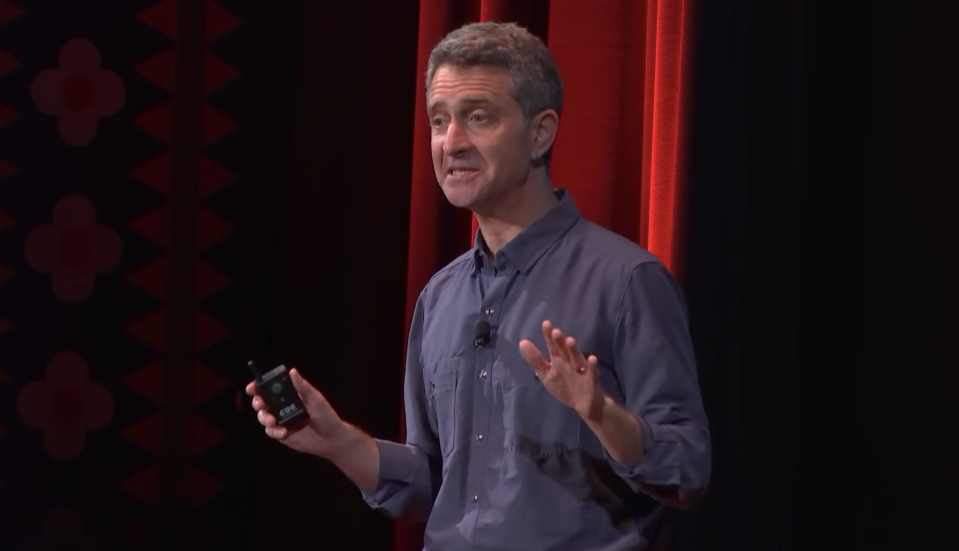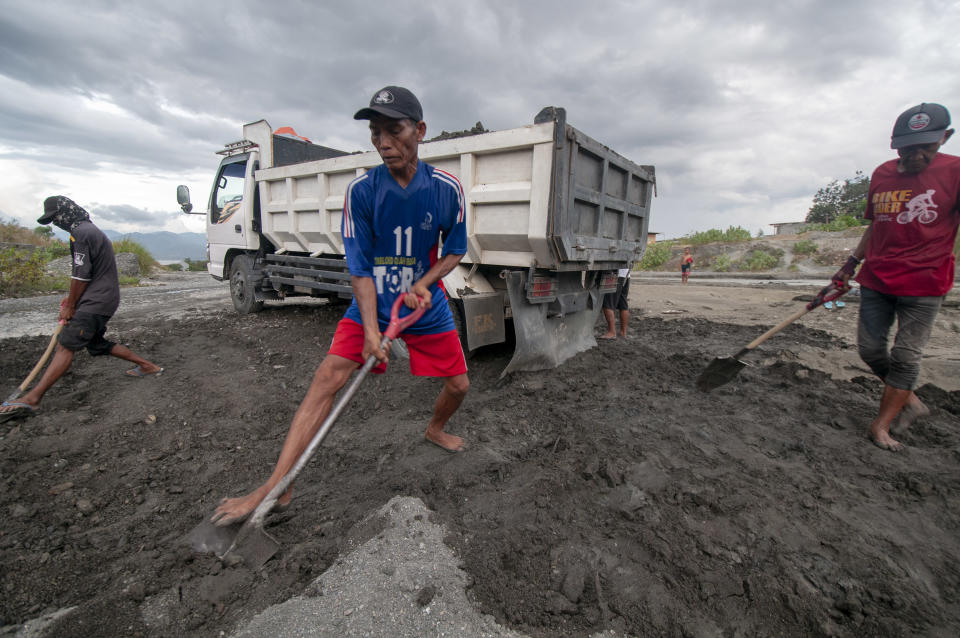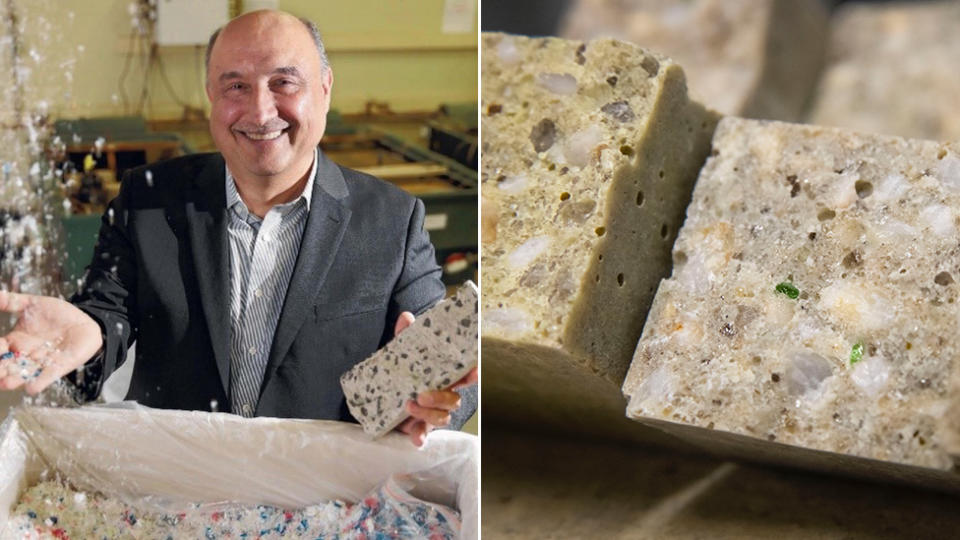'The coming sand wars': Approaching global crisis people don't know about
The world is heading towards a crisis which threatens to halt the continued construction of modern civilisation. There is, however, a silver lining: this time, we can’t bury our heads in the sand.
That’s because we are running out of it.
Sand has built the world we know today and every year we use around 50 billion tonnes of sand and gravel, and of course, sand is a major component in one of the most useful materials in the world – concrete.

In 2012 alone, the world used enough concrete to build a 27-metre-high, by 27-metre-wide wall around the equator.
Our consumption of the natural resource means we are now extracting sand at a faster rate than it is being replenished, and while a third of the earth’s surface in comprised of deserts, it’s the wrong sand for construction. Desert sand is too round to stick with cement, which is why Dubai imports sand from Australia.
Sand is formed over thousands of years and extraction of the often under appreciated commodity is having a detrimental impact on rivers systems as well as coastal and marine ecosystems all over the world.
“Sand and gravel build the foundations for our economies, finding uses in diverse sectors from construction to electronics to cosmetics,” Joyce Msuya, Acting Executive Director United Nations Environment Programme wrote in the foreword of a 2019 UN report.
But it’s not just the environment that’s paying the cost of our consumption, people are being killed over sand, as experts increasingly warn about “The coming sand wars”.
The Murder of Paleram Chauhan
“Today, the times we live in are weirder than science fiction,” American freelance journalist Vince Beiser told Yahoo News Australia.
Mr Beiser’s book “A World in a Grain” delves into the transformational power of sand and how it has become a source of tension in many parts of the world.
In 2015, he was trawling the internet, trying to find his next story when he came across an article in a local paper of a 53-year-old farmer in India, who was murdered over sand.
“I had never even thought about sand before – why in the world would anybody get killed over sand? It just seems like the most trivial thing in the world,” he reflected.

Through his research and reporting, Mr Beiser came to realise the integral part sand plays in the global economy.
“Sand is the most important solid substance in the world, it’s the raw material cities are made out of.”
Mr Beiser explains India is rapidly expanding and Paleram Chauhan’s story is just as much about sand as it is about the ‘modern world’ and the ‘traditional world’ colliding.
Submarines being used for illegal sand mining in India https://t.co/3WtgVKAzU8 via @Newsbitsdotin pic.twitter.com/0eyZiQgrS3 #sandcrisis
— Vince Beiser (@vincelb) March 13, 2017
“He was killed in a little farming village, it had been there for centuries,” Mr Beiser said, pointing out the suburbs of New Delhi now infringing on Raipur Khadar.
“That’s why there was all of a sudden all this demand for sand in that area [Raipur Khadar]. There’s this gang of goons, this gang of local thugs, [who] just came to the town, seized 200 acres of their land and ripped up all the crops, stripped up all the top soil and started selling the sand to developers in Delhi.”
Mr Beiser travelled to India and investigated the murder of Paleram Chauhan. Mr Chauhan’s family didn’t need to see the faces of his killers, they knew he was outspoken against sand mining in his town.
Paleram Chauhan was not the first person to be murdered over sand, Mr Beiser says, nor will he be the last.
The politics of the global sand trade
Over 2,000 kilometres away from Raipur Khadar lies the Salween River, which runs through three southeast Asian countries. Dr Vanessa Lamb, a geographer at the University of Melbourne, studied it for years.
Dr Lamb’s research focuses on the ‘human’ element of rivers, exploring how people use rivers and the political dynamics of them.
Through her research on the Salween River, mainly in Myanmar, Dr Lamb worked with communities along the river whose livelihoods depend on it.
Dr Lamb explained to Yahoo News Australia that the sand and sediments in the river were vital for local agricultural needs and sand mining was beginning to disrupt rivers.
“People were speculating with all the sand being removed it was really increasing erosion and sedimentation, so people were seeing banks falling into the river where houses were,” she said.

Details are hard to come by, she added, as it’s hard to find out where the sand is going and who is extracting it.
“The data has gaps, sometimes it’s politically sensitive,” she said.
Vietnam was the world’s 15th largest exporter of sand in 2018, and the country is expected to run out of construction sand within the coming years.
While Singapore, which is reportedly the world’s biggest importer of sand, continues to grow and aims to expand the island to almost 500 square kilometres by 2030.
This is despite the fact that Indonesia, Malaysia and Cambodia have banned exporting sand to Singapore.
Meanwhile Australia is the world’s fifth largest exporter of sand. In 2018 Australia exported 5.9 per cent of the world’s sand in global trade, according to World’s Top Exports.
The United States is the world’s largest sand exporter, followed by the Netherlands, Germany and Belgium.

Dr Lamb hasn’t come across the so-called ‘sand mafia’, but she believes there is “serious unfairness” in the increasingly contentious fight for sand.
In Myanmar, Dr Lamb explained there are a lot of permits, however who gets to ‘claim’ the sand becomes a bit contentious.
Sometimes it’s not even local criminal organisations or big corporations who are vying to snap up sand. United Airlines CEO Oscar Munoz was fined more than $A35,300 last year stealing sand from a public beach in Florida to create sand dunes in front of his $A10 million beach-front home.
“It’s a poor reflection on the whole community that someone would be that presumptuous to virtually steal something that belongs to the public and use it for personal gain,” one of Munoz’s neighbours, Bill Hudson told First Coast News.
The CEO and president of Web.com David Brown, managing director for UBS Financial Chris Aitken and a woman named Margaret Conolly have all copped similar fines for stealing sand.
Sand mining. #protectourGreen @GlobalLF @africanff @TreeFrogNews pic.twitter.com/AFVZzdtEN2
— K2a pta (@KituaPeter) November 9, 2019
The environmental impacts of sand mining
Professor David Kennedy is a Coastal Geomorphologist from the University of Melbourne and says “couple of decades ago” sand mining along the NSW coast to make glass was critical because the sand was mainly silica based.
While turning sand into something useful like glass is great for the economy, excessive sand mining can destabilise the whole river system.
“When you’re looking at a landform, it’s really the combination of the amount of water that’s flowing through the system and the amount of sand that’s there,” he explained.
“So as soon as you dig a hole and remove that sand the system starts adjusting, so in river systems you tend to destabilise the [river] bed.”
When sand is removed from a river, the water flow is more powerful and the rivers tend to “blow out”, causing erosion along the river bed, which then bleeds out.
At least two dozen islands in Indonesia have completely disappeared due to sand mining since 2005.

The effects of sand mining are not just found in Asia.
North Stradbroke island off Queensland’s Moreton Bay is the world’s second largest sand island and sand has been mined on the island since 1949.
In May 2016, legislation was passed to ban sand mining on the island in 2019.
The entire coastline of Stradbroke island was reformed following a sand-slide due to mining in 1980, not long after dredge mining on the island started which displaced four hectares of vegetation.
The traditional landowners of North Stradbroke Island, the Quandamooka Aboriginal people, welcomed the decision to cease mining on the island, with joint management coordinator for the Quandamooka Yoolooburrabee Aboriginal Corporation, Darren Burns telling the ABC in 2016 that although the island has reaped the economical benefits, the environment has paid the price.
Of course, when you close the sand mine, people lose their jobs, which could greatly impact the livelihoods of locals on the island.
Finding an alternative to sand in construction
Because sand is so integral to modern life, we can’t just stop using it. However, there are things we can do to prevent the crisis from getting worse.
Journalist Vince Beiser says we can’t really do much in terms of the populations continuing to grow, so we need to focus on consumption.
“Human beings can survive and live very well consuming less than we do here in the West,” he says.
Mr Beiser said in developed countries we need to think about how we can cut down on the resources we are using and deter the developing world from repeating our mistakes.

“Everybody is entitled to decent housing and decent roads, but there’s just no way we can all live the way that we do in the West.”
There are people who are actively seeking out substitutes for sand in construction, like senior engineering lecturer Dr Riyadh Al-Ameri from Deakin University who has found ground recycled or waste glass can be used in lieu of construction sand in concrete.
“Finding an alternative to sand makes good economic sense,” Dr Al-Ameri told Yahoo News Australia explaining the shortage of construction sand has lead to the rising cost of construction projects.
The concrete Dr Al-Ameri and his team developed is showing improved characteristics and has the potential to replace traditional sand-based concrete.
“Our research provides the evidence the construction industry needs to see the potential of glass as a substitute for sand when making polymer concrete and, potentially, concrete,” he said.
“The research results showed that glass produces a stronger product that is less costly to produce.”

Another project at Deakin University focused on using plastic to improve concrete characteristics and Dr Al-Ameri says there could be a “huge demand” for the product in the future and there is serious consideration for commercialising the product.
Although Mr Beiser says individual efforts should be encouraged, what the average person does is a “drop in the bucket” in the grand scheme of things.
“What we really need is massive level changes,” from corporations and governments, he said.
“It’s only when that happens things will start to shift.”
The NSW beach 'crumbling into the ocean' - and taking a community's identity with it
Tourists face six years' jail after 'stealing from pristine beach'
'It's not normal': What's caused the bushfires and how can we stop them?
Do you have a story tip? Email: newsroomau@yahoonews.com.
You can also follow us on Facebook, Instagram and Twitter and download the Yahoo News app from the App Store or Google Play.




